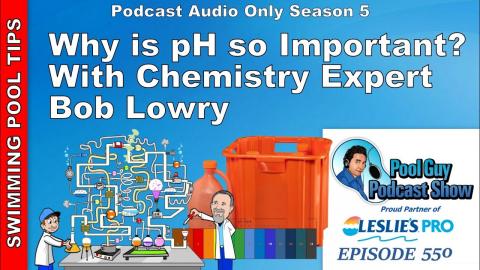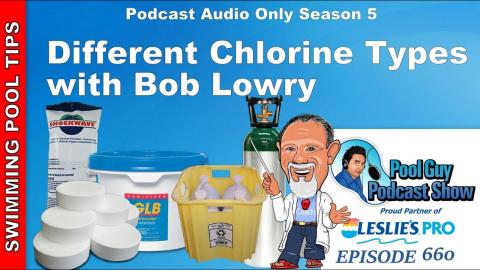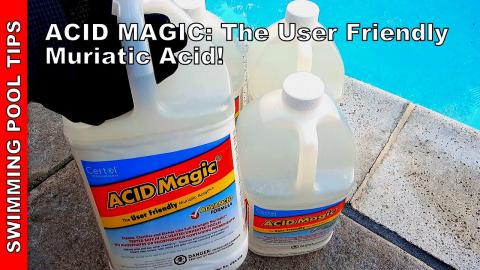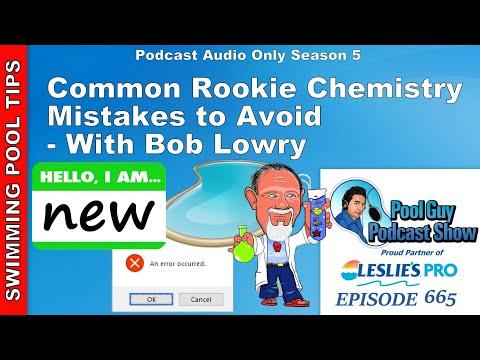The Problem with High Cyanuric Acid (CYA) with Chemistry Expert Bob Lowry
Description
One of the most common water balancing issues is having high Cyanuric Acid (CYA) in your pool. Cyanuric Acid often referred to as Conditioner or Stabilizer is added to the pool in order to slow the chlorine burn-off caused by the Sun's UV rays. But if you use 3” Chlorine Tablets (Trichlor Tablets) you will be adding Cyanuric Acid to your pool on a constant basis. Here I will discuss the effects of high CYA in your pool water, how to correct it, and ways to prevent it from rising to high levels again.
Bob Lowry is the author of over 23 books but this has to be one of his most relevant and shortest books coming in at just 19 pages thick. But it is packed with so many essentials on residential pool chemistry that you will want a copy to carry in your service truck. Bob Lowry has been in the industry for over 47 years and is the Lead Consultant at Lowry Consulting Group, leads the Pool Chemistry Training Institute, and has created the Certified Residential Pool & Spa Certification Program. Learn more at https://pcti.online/
If your CYA level is very low the Sun's UV rays will cause the chlorine to burn off quickly leaving your pool with no sanitizer or very low levels. The Conditioner in the pool helps to protect the chlorine from burning off too quickly.
Very high CYA levels will make the chlorine in your pool less effective which means you will have to keep the levels very high in your pool to make it effective. Your pool may also develop algae blooms even with high chlorine levels present. These algae blooms are also hard to get rid of in a pool with very high CYA levels. High levels of CYA will also give you false ORP readings if your pool uses ORP to measure the safety and swim-ability of the water. High CYA also will give you a false Alkalinity reading, if you test the Alkalinity and it is at 100 it is more likely at only 70 if you use the Adjusted Alkalinity reading,
The ideal level of CYA in your pool is 30-50 ppm and up to 80 ppm of you have a saltwater pool. Testing the Cyanuric Acid level in your pool at the beginning of the season is crucial. There are many ways to test the CYA level in your pool including the standard Turbidity test, digital testing, and test strips.
You should also utilize the LSI Index (Langelier Saturation Index) in your pool water testing. This will let you know if the pool water is scale-forming or corrosive. If you have a Taylor Test Kit (K2000 Series) it will have the Watergram included which will help you calculate the pool’s LSI. You can also use several online apps to calculate the pool’s LSI. Regardless of what you use, you should be checking the LSI at least once a month in your pool or the pool’s service.
Testing the CYA level in your pool if you suspect very high levels can be challenging. The standard Turbidity Test Kits only work effectively to 100 ppm. If you get an initial reading over 100 ppm you will have to do a dilution test of 50% tap water and 50% pool water. If the reading is still high you will need to use 75% tab water and 25% pool water and so on. Each time you dilute the sample the reading becomes more difficult to nail down accurately. Test strips are a great alternative in pools that have high CYA levels. Most test strips will go as high as 250-300 ppm so this is a good way to check pools that have very high CYA levels.
LaMotte actually makes a test strip that will read CYA levels up to 500 ppm accurately. This is a very handy test strip to have if you service pools for a living. Just dip the test strip in and then match it up to the side of the tube where there is a color chart.
Since Cyanuric Acid does not naturally leave the pool water if you add it to your pool through the use of 3” Chlorinating Tablets the levels will constantly rise. These 3” Trichlor Tablets are over 50% Conditioner per tablet by weight, so as you use them in the Summer you are constantly adding Cyanuric Acid to your pool water. The only way Cyanuric Acid leaves the pool water is through backwashing and splash out. As the water evaporates the Cyanuric Acid will remain in the pool. To lower the CYA level in your pool you will have to do a partial or full drain of the pool water.
Visit my Website: http://www.swimmingpoollearning.com/
eBook: https://www.swimmingpoollearning.com/swimming-pool-care-ebook
YouTube Video Index: http://poolmandave.blogspot.com/2014/03/swimming-pool-tips-reviews-how-to-video.html – A list of all of my videos.
Coaching Site: https://poolguycoaching.com/
Shop at Leslie's: Leslie’s Pool Supplies has been do-it-yourselfers and pool trade professionals trusted partner since 1963, providing quality products and services to make pool care easy and solutions and expertise to do it right. http://lesliespool.com/?utm_medium=referral&utm_source=spll&utm_campaign=spll







![Horizon Forbidden West | 40 GPUs Tested [1080p, 1440p, 4K | Medium, High, Very High + Upscaling]](https://www.vortak.net/uploads/thumbs/efd3883e9-1.jpg)






Comments